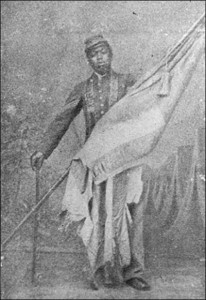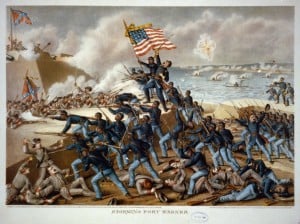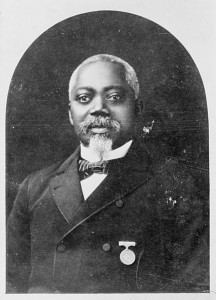Recalling flag hero of Civil War

The week that marks the birthday of Martin Luther King Jr. and the upcoming observance of Black History Month in February are appropriate times to recall the heroism of Sgt. William H. Carney, a remarkable protector of the U.S. flag during the Civil War.
Born into slavery in Virginia, Carney grew up to travel the Underground Railroad to freedom in Massachusetts. When the 54th Massachusetts Infantry was formed, he became a member of the first black outfit assembled in the North.
Led by a white man, Col. Robert Gould Shaw, the 54th found itself in mid-1863 in South Carolina, just two weeks after the Battle of Gettysburg in Pennsylvania. The regiment joined in the attack on Fort Wagner, which they hoped would lead to the capture of Charleston. (The assault is part of the 1989 film “Glory.”)

The regiment’s history recounts that “Wagner became a mound of fire, from which poured a stream of shot and shell.” Amid the chaos, a flag-bearer “fell into a deep ditch,” and Carney “caught the colors.” He would recall that “as quick as a thought, I threw away my gun, seized the colors and made my way to the head of the column.”
With Shaw waving his sword and Carney waving the American flag, the black troops pressed on. Shaw was killed, but the 54th moved ever forward, following Carney’s lead.
“All around me were the dead and wounded, lying one upon top the other,” the former slave remembered. “It seemed a miracle that I should have been spared in that awful slaughter.” Realizing that the battle was lost, he said, “I wrapped the precious colors about the staff and cautiously picked my way among the dead and dying.”
When a bullet fractured his thigh bone, he began crawling, still clutching the national banner. A Boston newspaper would report that “he brought the colors off, creeping on his knees, pressing his wound with one hand and with the other holding up the emblem of freedom.”

Wounded again in his head, Carney still refused to surrender the flag for anyone else to carry. When he finally reached his fellow soldiers, “they cheered me and the flag,” he related, “and my reply was ‘Boys, the old flag never touched the ground.’”
For his heroism amid shot and shell, Carney was awarded the Medal of Honor. Fort Wagner finally fell in September.
